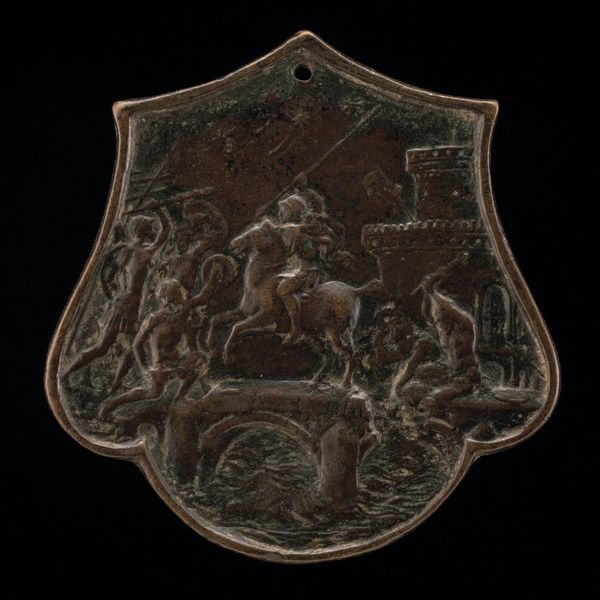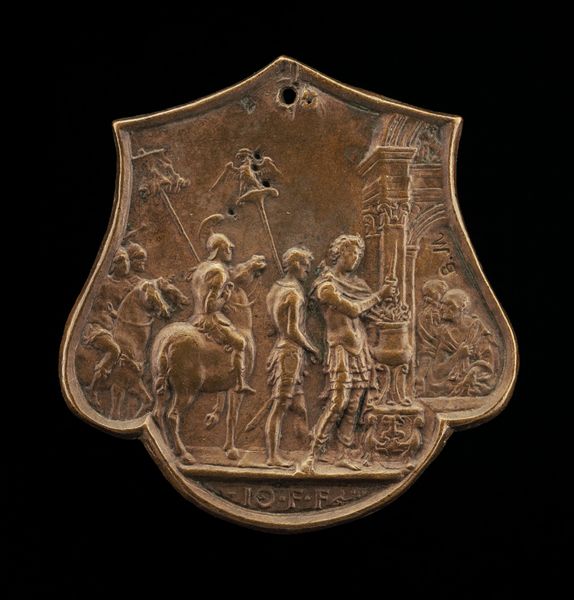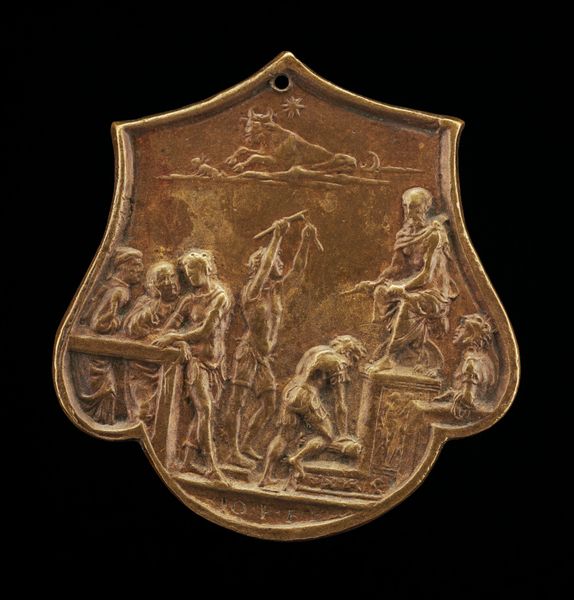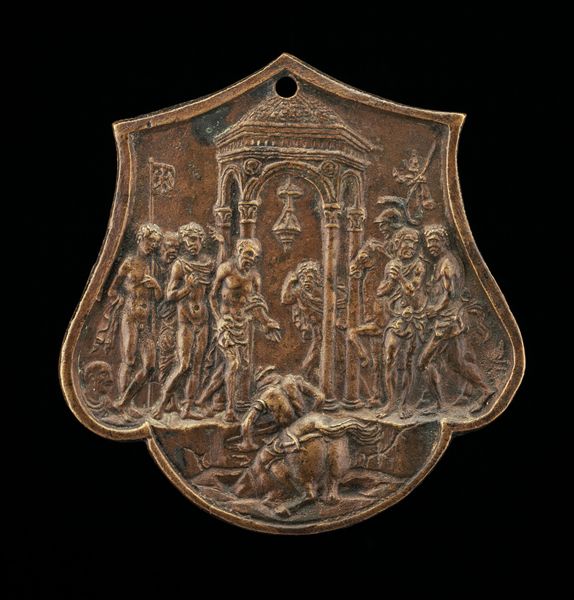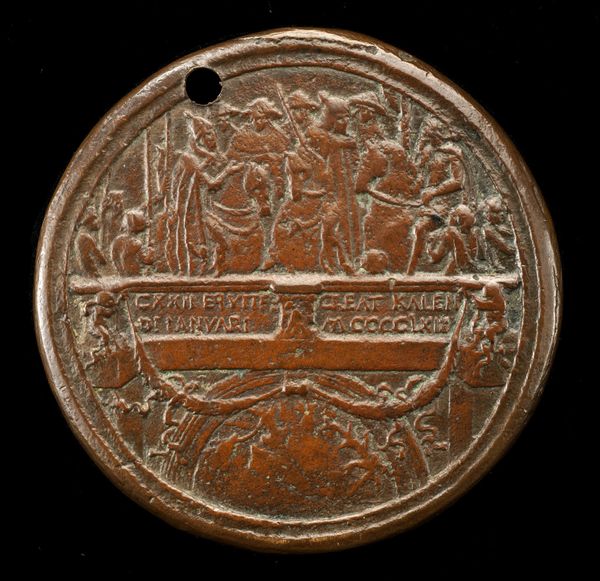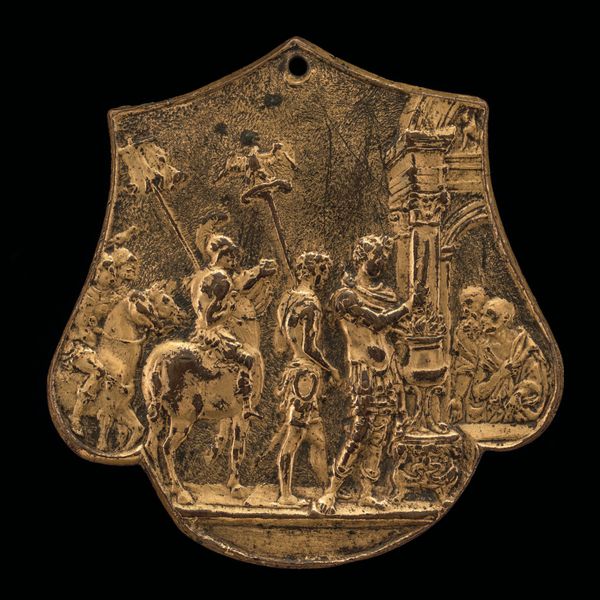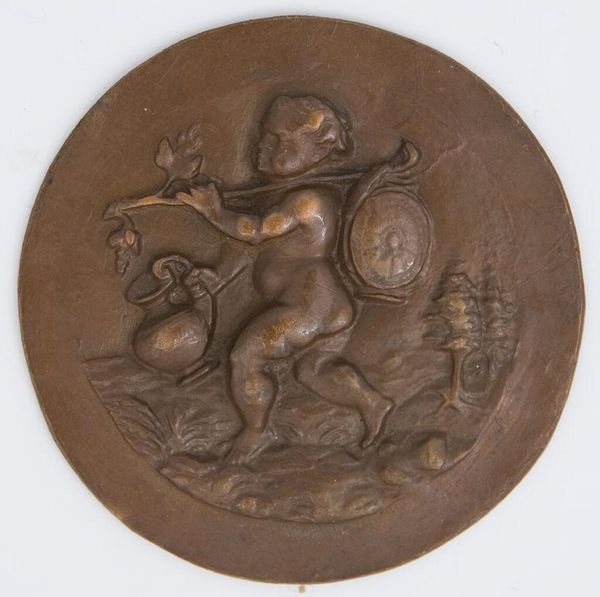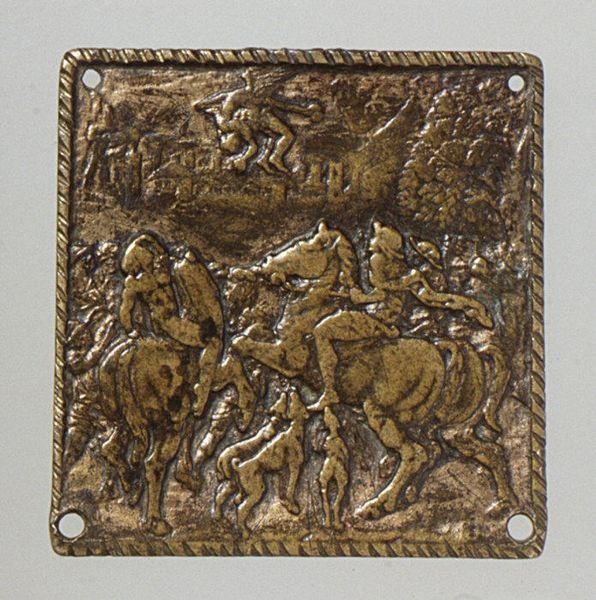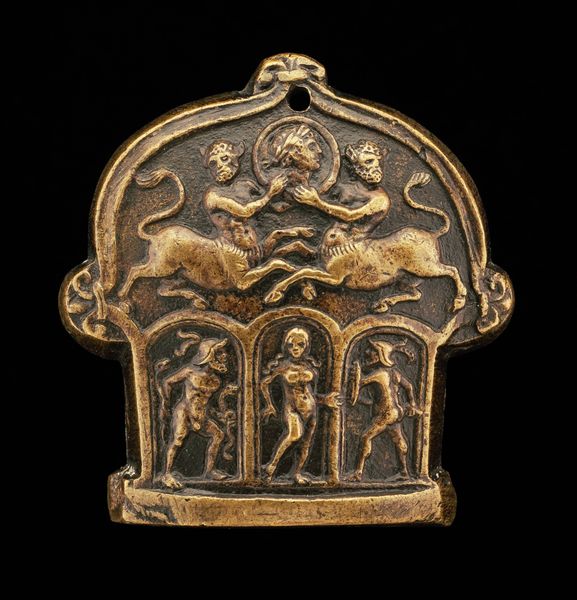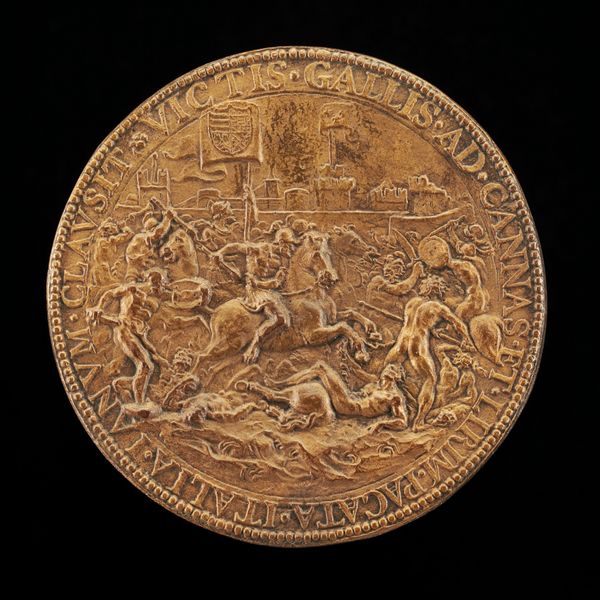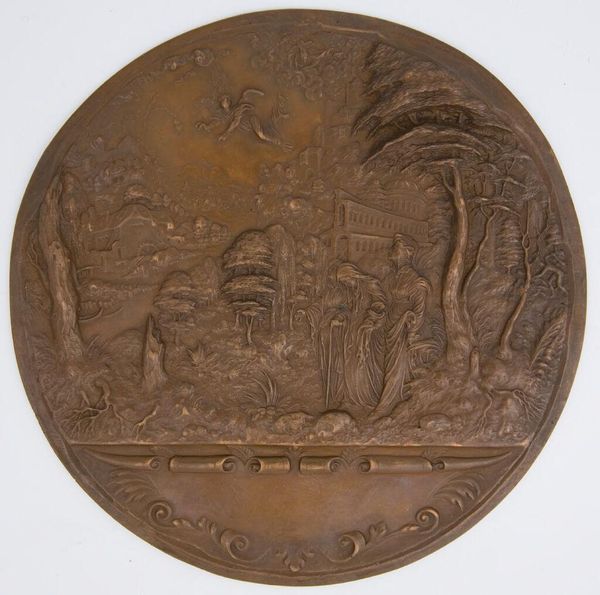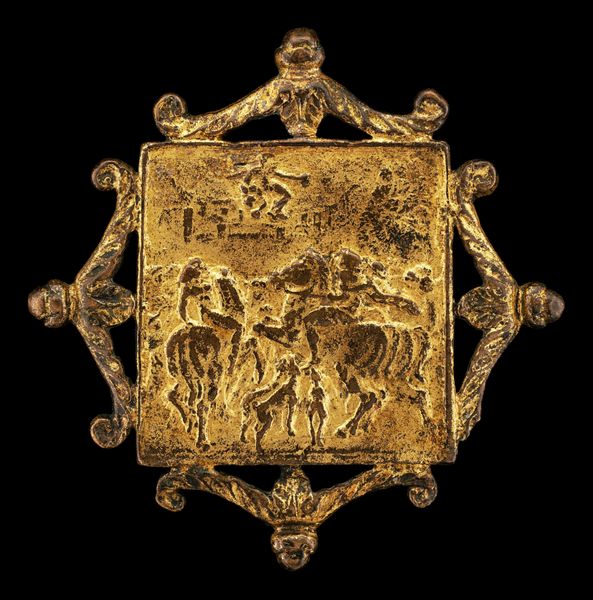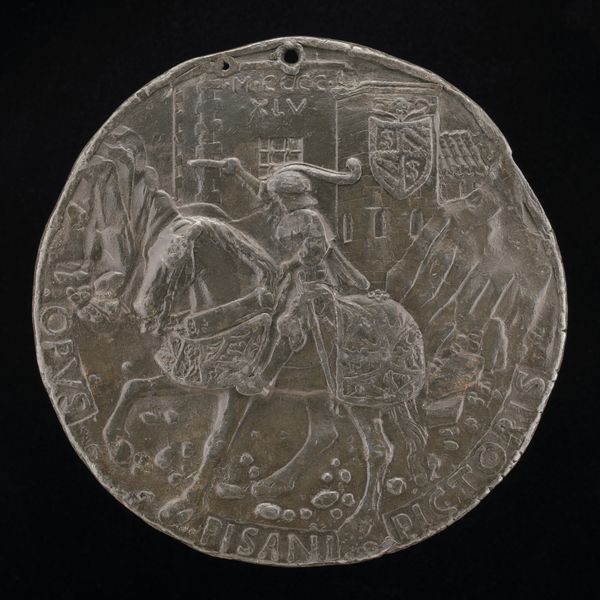
relief, bronze, sculpture
#
narrative-art
#
sculpture
#
relief
#
bronze
#
figuration
#
sculpture
#
history-painting
#
italian-renaissance
Dimensions: overall (shield-shaped): 6.13 × 5.91 cm (2 7/16 × 2 5/16 in.) gross weight: 41.47 gr (0.091 lb.)
Copyright: National Gallery of Art: CC0 1.0
Curator: Today we're looking at a bronze relief sculpture titled "Horatius Cocles Defending the Bridge," created by Master IO.F.F. around the 15th century during the Italian Renaissance. Editor: It’s remarkable how much energy the artist manages to convey in such a small space! The way the figures are packed together, the exaggerated gestures—it creates a sense of urgent chaos. It almost feels like a mosh pit. Curator: Absolutely. It’s drawing on a specific narrative from Roman history. Horatius Cocles was a Roman officer who single-handedly defended the Pons Sublicius against the Etruscan army, allowing the Romans to destroy the bridge and prevent the enemy from crossing the Tiber. Think about the socio-political implications: valorizing patriotic sacrifice during a period of intense civic pride and competition among Italian city-states. Editor: So it’s less about the specific historical accuracy, and more about using the past to construct an idealized image of masculine virtue and the defense of homeland? Are we looking at a mythologized understanding of history that prioritizes an exclusively white male interpretation of heroism? I wonder about how this image was consumed: did it incite civic responsibility, or reinforce societal power structures? Curator: That's a crucial point. We should also acknowledge that art production during the Renaissance was intrinsically connected to wealthy patronage, thus influencing the distribution and the narrative communicated through these sculptures. Wealth and political clout largely controlled artistic output. This piece likely served a propaganda purpose: reinforcing the ruling class agenda. Editor: This complicates any straightforward understanding of "heroism" the relief attempts to illustrate. Knowing the Roman empire's history of territorial conquest, class and racial suppression adds a critical layer through which to understand what this heroic display obscures. In other words, at what cost comes the glorification of one man at the expense of so many others? Curator: I think you're spot on in pointing out how that kind of perspective invites critical interrogation, because ultimately the circulation of artworks always reflects a political context, where power operates. Editor: Right! I will consider the Horatius Cocles narrative within its own social landscape moving forward. It encourages thinking beyond the visual, considering power, privilege, and social impact.
Comments
No comments
Be the first to comment and join the conversation on the ultimate creative platform.
